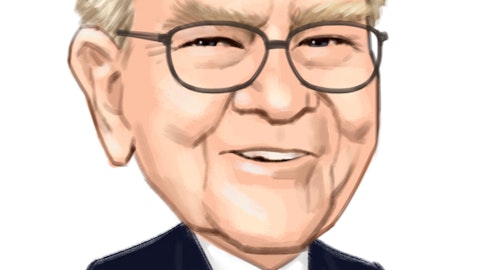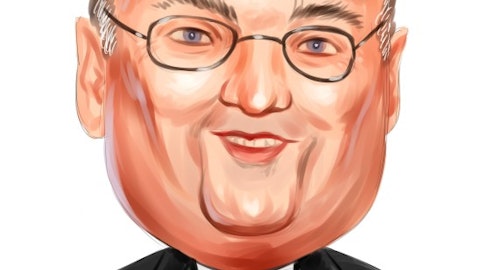Having upstream and downstream operations also improves SU’s trading capabilities and diversifies cash flow sources during times of unexpected commodity swings.
We are also very impressed with the communication of SU’s management team. Their earnings calls and annual reports sound very much like Buffett, which is perhaps another reason why he likes SU. The following excerpt is from SU’s third quarter earnings call and highlights the company’s disciplined capital allocation:
“Our strategy has been, first of all, we have to earn the right to spend money, so we have to run our existing assets very, very well. That’s what operational excellence is about and I’m pleased with the progress we’re making, still more to come, and you will see that in terms of reliability and continued reduction in operating costs. We’re not finished yet; we still have some more of that to deliver. So run the assets really well.
The second part then has been about a very disciplined allocation of capital. And we have three ways that we look at using that capital. The first one is organic growth and, you know, what’s so pleasing about these results are that we are still funding our organic growth. We’ve grown it nearly 10 percent for the last four or five years, per year, and we are growing at 5 percent through to the end of this decade with investments that are in place.
And we then have a very long list of organic projects which are there, but they have to compete with the other two buckets. One of those buckets is the world of M&A and we’ve been looking and, you know, whether we’re at the bottom of the cycle there’ll be as many views as there are individuals having the conversation. What we know is that in the M&A world at these prices some companies have started to look reasonably attractive to Suncor. So we’re letting those compete. And then, you know, I think our track record speaks for itself on the third bucket, which is we return money to shareholders. We talked in our prepared comments about the $10 billion of free cash that we’ve generated and returned. We’ve done that through a mix of dividend and buying back through share buybacks 10 percent of the company.
So we let those three compete and the beauty of that is that given the very healthy balance sheet we have we’re in no hurry. We have very good opportunities in each of those. Our shareholders, very happy to take returns themselves. The organic growth list is a very long list, which takes us forward for the next, you know, 20-plus years, and we’ve got some of these targets. The commitment that I’ve been giving very clearly to share-holders is we will not move from that capital discipline. If things don’t fit in on those lists we will not pursue them or move away. We’ll do that on organic projects, we’ll do that on potential M&A targets, and we will use the tools available to us in terms of returning to shareholders.”
SU’s asset base, operational expertise, and capital discipline have helped it establish extremely low production costs. Management expects SU’s cash operating costs per barrel for oil sands operations to approach $20 per barrel in 2016. The company has done an excellent job reducing costs despite enjoying consistent growth in oil production, which is 9% higher than it was in 2014.
Importantly, the company is one of the few oil companies in the world to keep generating free cash flow in today’s oil price environment. Even despite investing over Cdn$900 million of growth capital in the third quarter, SU generated free cash flow. Through the first nine months of 2015, SU has generated Cdn$5.5 billion of cash flow and Cdn$875 million of free cash flow after Cdn$2.7 billion of growth capital spending.
SU’s balance sheet is another advantage. The company finished last quarter with Cdn$5.4 billion in cash and undrawn lines of credit of Cdn$6.9 billion for total liquidity of over Cdn$12 billion. It also has an investment-grade credit rating from S&P.
All of these advantages are allowing SU to make opportunistic investments while practically every other energy is significantly curtailing investment dollars. Two examples are the company’s recently stepped-up investment in the Fort Hills project and its proposal to acquire Canadian Oil Sands.
Fort Hills is a Cdn$15 billion project that is set for first oil production at the end of 2017. SU recently bought another 10% interest in the project for Cdn$1 billion, bringing its total ownership to about 51%. Fort Hills has an expected operating life of over 50 years with an anticipated cash operating cost of less than Cdn$25 per barrel. The price SU paid for the additional 10% interest was about Cdn$56,000 per flowing barrel compared to overall project costs of Cdn$84,000 per flowing barrel, creating potential for a very strong return.
However, SU’s $4.3 billion offer to acquire Canadian Oil Sands’ is even more opportunistic. Canadian Oil Sands owns 37% of Syncrude, a project which mines and upgrades bitumen in Alberta and has decades of valuable supply. SU currently owns 12% of the project.
SU believes it can drive real operational improvements in Syncrude’s performance with a larger ownership interest. Syncrude ran at only 67% of capacity during the third quarter compared to SU’s 90%+ reliability rate for the year. It is also bleeding cash and has a debt rating only one notch above speculative.
Of course, many of Canadian Oil Sands’ shareholders feel that SU is trying to buy the asset at a distressed level price. SU’s offer has been extended through 1/27/16, and we hope it is ultimately accepted.
All things considered, SU shares many qualities with some of our favorite blue chip dividend stocks.





